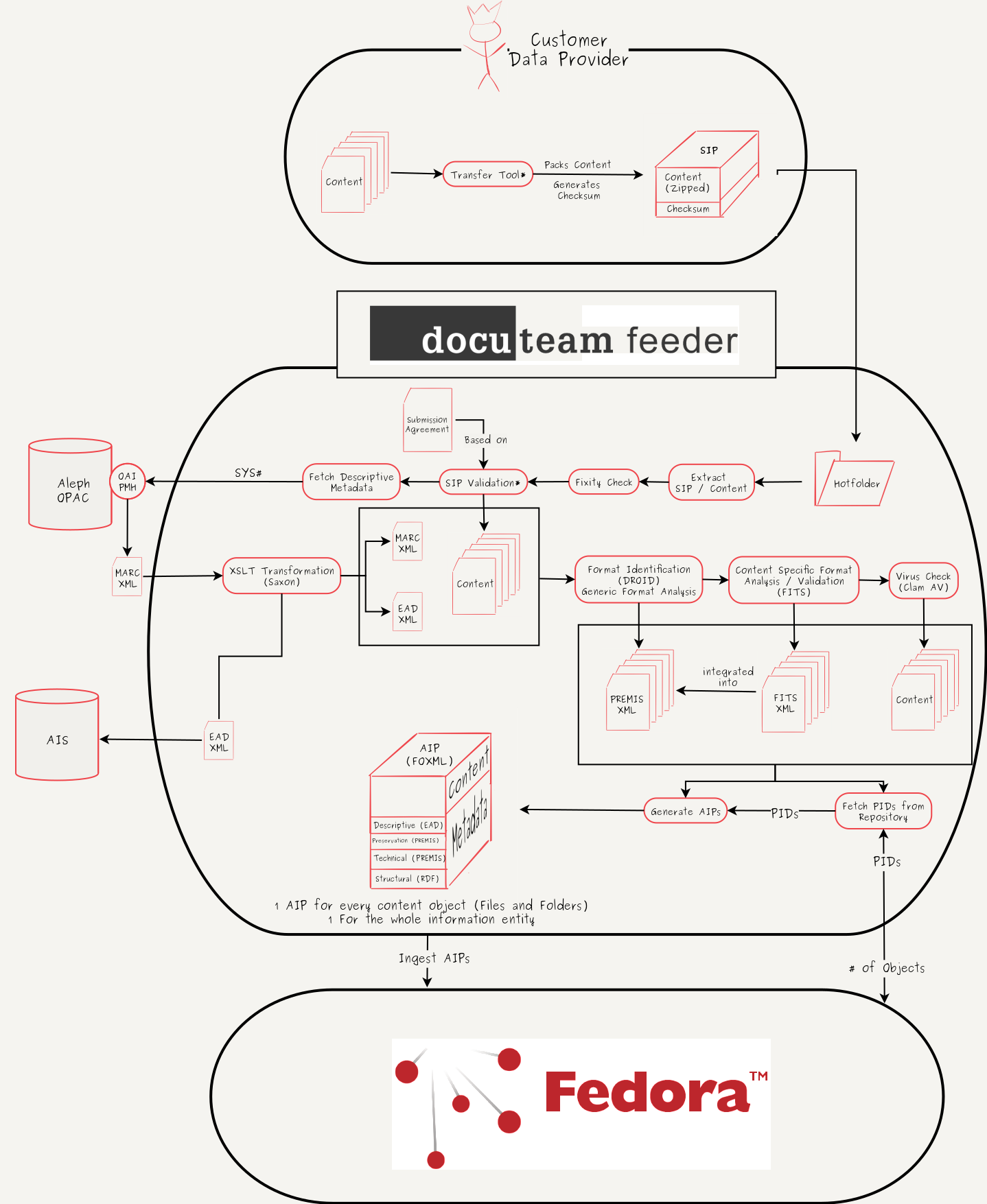Workflow:Workflow for ingesting digitized books into a digital archive
Workflow Description
- The data provider provides their content as an input for the transfer tool (currently in development).
- The transfer tool creates a zip-container with the content and calculates a checksum of the container.
- The zip-container and the checksum are bundled (another zip-container or a plain folder) and form the SIP together.
- The transfer tool moves the SIP to a registered, data provider specific hotfolder, which is connected to the ingest server.
- As soon as the complete SIP has been transfered to the ingest server, a trigger is raised and the ingest workflow starts.
- The SIP gets unpacked.
- The zip container that contains the content is validated according to the provided checksum. If this fixity check fails, the data provider is asked to reingest their data.
- The content and the structure of the content are validated against the submission agreement, that was signed with the data provider (this step is currently in development).
- Based on an unique id (encoded in the content filename) descriptive metadata is fetched from the library's OPAC over an OAI-PMH interface.
- The OPAC returns a MARC.XML-file.
- The MARC.XML-file is mapped to an EAD.XML-file by a xslt-transformation.
- The EAD.XML is exported to a designated folder for pickup by the archival information system
- Every content file is analysed by DROID for format identification and basic technical metadata is extracted (e.g. filesize).
- The output of this analysis is written to a PREMIS.XML-file (one PREMIS.XML per content object).
- Every content file is validated and analysed by FITS and content specific technical metadata is extracted.
- The output of this analysis (FITS.XML) is integrated into the existing PREMIS.XML-files.
- Each content file is scanned for viruses and malware by Clam AV.
- For each content object and for the whole information entity (the book) a PID is fetched from the repository.
- For each content object and for the whole information entity an AIP is generated. This process includes the generation of RDF-tipples, that contain the relationships between the objects.
- The AIPs are ingested into the repository.
- The data producer gets informed that the ingest finished successfully.
The tools and their function in the workflow:
- 7-Zip - Pack and unpack content / SIPs
- docuteam feeder - Workflow- and Ingestframework
- cURL - Fetch MARC.XML per http
- Saxon - MARC.XML to EAD.XML mapping
- DROID - Format Identification and generation of basic technical metadata
- FITS_(File_Information_Tool_Set) - Generation of specific, content aware technical metadata
- Clam AV - Virus check
- Fedora_Commons - Digital Repository
Purpose, Context and Content
The University Library of Bern digitizes historical books, maps and journals that are part of the "Bernensia" collection (Media about or from authors from the state and city of Bern). The digital object resulting from this digitization process are unique and therefore of great value for the library. To preserve them for the longterm, these objects have to be ingested into the digital archive of the libray. The main goal of this workflow is to provide an easy interface to the data provider (digitization team), to provide a simple gateway to the digital archive and to collect the as much metadata as is available in an automated way.
Evaluation/Review
A subset of the workflow has been setup and tested as a proof of concept on a prototype system. It will be installed and extended in a productive environment shortly .
Further Information
ChrisReinhart (talk) 14:00, 7 April 2017 (UTC)
